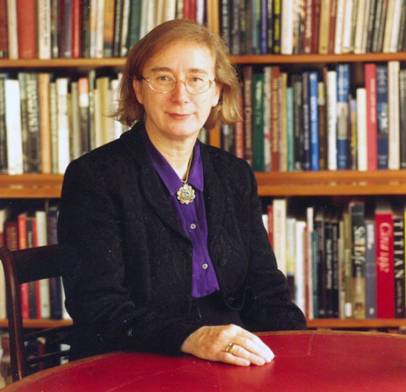Events
The Institute of Chinese Studies Mok Hing Yiu Lecture by Professor Dame Jessica Rawson on "China and Central Asia Exoticism in China – Sixth to Eighth Century CE" (in English)
Print
Date:
20 Oct 2011
Time:
3:00 pm
Venue:
Cho Yiu Hall, G/F University Administration Building, CUHK
Biography of Speaker:
Professor Dame Jessica Rawson, DBE, DLitt, FBA
A biographical sketch
Professor Jessica Rawson is Professor of Chinese Art and Archaeology in the Oxford Centre for Asian Archaeology Art and Culture in the School of Archaeology, University of Oxford. She was Warden of Merton College, Oxford University 1994-2010 and Pro Vice-Chancellor of the University 2005-2010. Before moving to Oxford, she worked in the Department of Oriental Antiquities at the British Museum for over twenty years.
She graduated from Cambridge University in History and from London University in Chinese Language and Literature. She became Deputy Keeper of the Department of Oriental Antiquities of the British Museum in 1976 and Keeper of the Department in 1987. She was made a CBE in 1994 and a Dame in 2002. After moving to Oxford in 1994, Professor Rawson organised further exhibitions in London at the British Museum and the Royal Academy. Professor Rawson is a member of a number of academic committees in Britain. She supervises graduates at Oxford and has taught at the Universities of Cambridge, London and East Anglia. She has also held visiting Professorships at the Universities of Heidelberg and Chicago. She was appointed a Fellow of the British Academy in 1990. She is an Advisor to the Centre of Ancient Civilisations, Institute of Archaeology, Chinese Academy of Social Science. Professor Rawson has had close relationships with most countries in the Far East and has visited many parts of the Far East regularly over the last twenty years. Her current work concerns religion and ritual changes in the Zhou, Qin and Han period (1000BCE – CE200) and she has also written extensively on Tang dynasty (CE618 – 906) silver and ceramics, especially on Chinese ornament and design.
Admission:
Free
Enquiries:
3943-8893
Synopsis of Lecture:
China and Central Asia
Exoticism in China – Sixth to Eighth Century CE
Abstract
With the fall of the Han dynasty in the third century CE, northern China came under the rule of several different dynasties, including those set up by the Xianbei people, ruling as the Northern Wei and their successors. During these centuries, Buddhism was introduced and the great caves temples at Yungang and Longmen carved with a multitude of Buddhist figures. This interest in religious figural sculpture was one of many innovations brought to China from Central Asia. At the same time foreign luxuries in gold, silver and glass were popular with the élite.
The talk will describe some aspects of this exotic lifestyle fostered by the sixth century rulers of the Northern Qi and Northern Zhou, a time when their capitals were hosts to Sogdian traders, whose recently excavated coffins and coffin beds have provided an exciting window onto the customs of these important merchants. These sixth century tombs provide a context for the luxuries of the early Tang in the seventh and eighth century. Like their predecessors, the Tang sought influence in and contact with Central Asia. This interest is mirrored especially in the sancai, or three coloured lead glazed, ceramics, used both as vessels and as tomb figures. Among these, flasks and dishes with complex appliqués and figures of camels and horses are especially well known. The talk will argue that these famous wares, being made in China, were intended to present and to suggest a Central Asian taste, and provide a cosmopolitan atmosphere for those who used them. These ceramics were, indeed, deliberately exotic by design.




